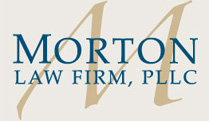Planning after “Repeal” of the Estate Tax
From its inception, the 2001 tax act was
scheduled to repeal the federal estate tax and generation skipping transfer tax
(GSTT) for one year beginning January 1, 2010. This should come as no surprise.
What is surprising, however, is the fact that the 2001 tax act has now played
out and repeal, at least temporarily – and unless reinstated retroactively – is
upon us. This post explores how we got here
(which may be instructive as to what will happen in the future) as well as some
of the planning implications of no federal estate tax or GSTT for at least some
part of 2010.
How Did We Get Here?
On June 7, 2001, President George W. Bush signed into law the much-heralded
Economic Growth and Tax Relief Reconciliation Act of 2001 (EGTRRA), designed to
provide significant tax relief, including "permanent" relief from the
federal estate tax (with its then $675,000 exemption and maximum 55% tax rate).
As we know, EGTRRA steadily lowered the maximum estate tax and GSTT rate to
45%, while increasing the exemption amounts to $3.5 million in 2009 and
eliminating federal estate tax and GSTT altogether in 2010. However, as a result
of a Senate rule that limits laws with a negative fiscal impact to 10 years
(the so-called Byrd Rule), from inception EGTRRA contained a "sunset"
provision. Under this provision, as of January 1, 2011, the law is scheduled to
revert back to pre-EGTRRA law as if EGTRRA never existed. In other words, the
federal estate tax and GSTT exemption will become $1 million (it was scheduled
to increase under prior law) with a maximum rate of 55%.
What Will Congress Do Now?
No one knows with certainty what Congress will do to remedy this situation but
several key Congressmen have stated publicly that they will attempt to pass
estate tax legislation early in 2010. One of them, Senator Max Baucus, Chairman
of the Senate Finance Committee, has said that swift action is necessary to
prevent "massive, massive confusion."
Furthermore, many in Congress have expressed the desire to make such
legislation retroactive to January 1, 2010. If Congress purports to make these
tax charges retroactive to January 1, there are sure to be numerous lawsuits
over the constitutionality of such retroactivity and, in all likelihood, these
challenges would not be resolved until after years of litigation culminating in
a Supreme Court decision. Where would that leave clients who die in the
interim?
Cynics, however, note that these same Congressmen were unable to pass a
one-year patch that would have eliminated the confusion in the first place.
They also suggest that it is in the best interest of both Democrats and
Republicans to do nothing and let EGTRRA sunset – and their argument has gained
traction recently.
The argument is as follows: Democrats have incentive to do nothing because this
law was passed by a Republican Congress and signed by a Republican President –
they have no responsibility for the insanity caused by the sunset. Republicans,
alternatively, are incentivized to do nothing because they have steadfastly
argued for total repeal of the "death tax," and this cry – at least
in 2001 – resonated with the American people. Their argument is that Democrats
had the opportunity to permanently end the "death tax" and chose not
to. In what potentially will be a significant mid-term election, many in
Congress will likely use their position on the "death tax" in an
attempt to ensure reelection.
Modified Carryover Basis
Under our current estate tax system, subject to some exceptions, assets owned
at death receive a basis "step-up" to their fair market value at the
time of death. Therefore, if your client dies owning Walmart stock that he or
she bought for $10,000 many years ago, for example, the beneficiaries could
sell the stock at its fair market value of, say, $10 million, and pay little or
no income tax. The only tax the beneficiaries would have to pay would be on the
difference between the sale price and the fair market value at death. (Of
course, the stock would also be subject to estate tax at the client's death.)
Under EGTRRA, along with repeal of the estate tax and GSTT in 2010, a
beneficiary receives property with an adjusted basis equal to the lesser of the
decedent's basis or the asset's fair market value on the decedent's date of
death. Thus, EGTRRA eliminates the automatic "step-up" to the date of
death value but retains the "step-down" for depreciating assets.
To offset this loss of the step-up in basis, EGTRRA provides that the executor
(or other person responsible for the decedent's property) may allocate a $1.3
million "aggregate basis increase" on an asset-by-asset basis up to
the particular asset's fair market value at the date of the decedent's death.
Assets left to a spouse may receive an additional $3 million "spousal
property basis increase," also asset-by-asset, up to the particular
asset's fair market value at the date of the decedent's death.
Lifetime Powers of Appointment
Under current law, for purposes of the basis step-up, a surviving spouse owns
property in a marital trust over which that spouse has a lifetime or
testamentary power of appointment. However, for purposes of the $3
million spousal property basis increase, only a QTIP trust is eligible and
EGTRRA treats property in a QTIP trust over which the surviving spouse has a
lifetime power of appointment as not owned by that spouse. Thus, if the
surviving spouse has a lifetime power of appointment over the
QTIP trust the executor (or other person responsible for the decedent's
property) cannot allocate the spousal basis increase to marital trust property.
Alternatively, the executor can allocate the spousal property basis increase to
QTIP property over which the surviving spouse has only a testamentary
power of appointment.
The Impact on Existing Estate Plans
Residuary Marital Trust Formula Funding Clauses
Under a typical living trust or will, the document creates at least two trusts,
a credit shelter (aka bypass or Family) trust and a marital trust. Often, the
living trust or will language divides the decedent's property into the two
trusts through what is known as a residuary marital trust formula funding
clause, as follows: the amount of the decedent's property that will pass to the
credit shelter trust equals the "maximum amount that can pass free of
federal estate tax;" the balance of the decedent's assets pass to the
marital trust.
If the client created this estate plan when the federal exemption was
significantly lower, and in particular if the client dies in 2010, this common
estate planning language will cause the unintentional over-funding of the
family trust and under-funding of the marital trust. Where the family and
marital trusts contain identical beneficiaries and dispositive provisions, this
over-funding of the family trust and under-funding of the marital trust will
have no significance. However, if the family and marital trusts contain different
beneficiaries and/or different dispositive provisions, this may cause
unintended and undesirable consequences to the client.
For example, with second or subsequent marriages, and in particular where there
are children from a prior marriage, the client often limits the surviving
spouse's rights to the income from the marital trust, while the children from
the prior marriage are often the beneficiaries of the credit shelter trust. If
the client dies in 2010, all of the client's assets will pass to the
credit-shelter trust, and the marital trust – i.e., the surviving spouse – will
receive nothing! This is certainly not what the client wanted and it will not
provide the state's statutory minimum to the surviving spouse. With few or no
assets left to the surviving spouse, he or she may resort to a lawsuit against
the trust or estate for the statutory minimum, thereby increasing legal fees
and wreaking havoc with the estate plan.
Conclusion
Since most estate planners did not anticipate EGTRRA playing out into 2010,
many clients' estate plans fail to take into consideration the lack of estate
tax and its replacement, modified carryover basis. As the above discussion
demonstrates, the key is flexibility and ensuring that clients' estate plans
contain enough flexibility to accomplish their goals under changing
circumstances.








